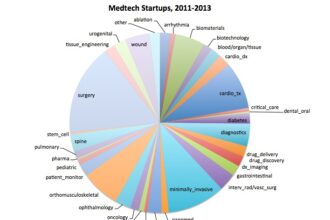Are you a frustrated patient because you get little time with your physician each visit? Are you a frustrated physician who would like to spend more time but can’t make it work financially? Here are some developing approaches.
Are you a frustrated patient because you get little time with your physician each visit? Are you a frustrated physician who would like to spend more time but can’t make it work financially? Here are some developing approaches.
Reimbursement rates for primary care visits are low, so primary care physicians (PCPs) need to see many patients to cover office expenses. There are many ways that PCPs are using to escape the current need to see very large numbers of patients each day, linked as it is with reduced time for extensive preventive care and for care coordination of those with chronic illnesses.
One approach is the retainer-based model. Here the physician no longer accepts insurance and is paid an annual fee of, usually, $1500-$2000. In return the PCP agrees to reduce his or her practice to about 500 patients (from the usual 1500 or more) and gives each remaining patient whatever time is necessary for their care. This includes office visits within 24 hours of a call; visiting the patient in the emergency room, hospital or nursing home; use of email; 24/7 access via cell phone. Included is an extensive annual evaluation and often basic laboratory tests.
Not all physicians are comfortable completely eliminating insurance. They may join a program such MDVIP which takes a sort of middle ground approach. The PCP still bills the insurance carrier but also requires a $1500 annual fee. He or she limits the practice to 500 patients and generally follows the approach noted above including a very extensive annual exam including vision, hearing, pulmonary function exam, an electrocardiogram if appropriate and a large battery of blood and urine tests. MDVIP also has a web site with useful information and sends out a newsletter quarterly. MDVIP doctors also provide access to extensive personalized genetic testing, cardiovascular assessments and are committed to assisting with a personalized wellness program.
Another approach is to stop accepting insurance and expect the patient to pay a fee each visit – “pay at the door.” In such a practice, Dr. Brian Forrest in North Carolina began by charging $40 per patient visit. It was the same $40 whether it was a time consuming evaluation or a quick blood pressure check. He has been in practice within this model for about a decade and has raised the price per visit by about a dollar per year so it is now $56 per visit. He does not limit his practice to any set number but he does have measures of quality standards. He also offers an “access card” which in return for an annual fee gives the patient an annual extensive evaluation plus further office visits for $29 each.
Another, somewhat similar approach has been developed by Patient Care Direct (PCD), also based in North Carolina. Their concept is that today each PCP spends about $58 per visit in administrative costs for coding, billing and collections which is essentially money wasted – not spent on direct care of the patient. Given today’s insurance reimbursement rates, the physician nets about $28 per visit after all expenses and so must see 20-30 patients per day to maintain income. This suggests that a large amount of money could be saved by eliminating the administrative costs through having the physician contract directly with the patient (same as with Dr. Forrest’s model above). In the PCD model, the physician no longer accepts insurance. The patient pays an annual fee (essentially like a retainer) to purchase an “access card.” Think of this like a gym membership to which one pays a monthly or annual fee. The physician is allotted a software program from PCD that manages the access card fee with renewals possible on-line. The result is a need in the office only for the clinical team and a receptionist. The doctor does not overtly reduce his or her patient numbers but patients, since they are paying directly, expect a high level of service which, according to a company spokesperson, in turn leads to an appropriate patient number. The spokesman also noted that since there is no longer a 2-3 person billing function, those dollars can go towards better care delivery, more extensive prevention management and closely coordinating chronic illness care.In eastern North Carolina is yet another program of similar nature. Atlantic Integrated Health (AIH) has a $50 monthly fee and a $15 per visit payment with an emphasis on health and wellness. Their video is fun to watch.
In these plans with a direct physician–patient contract, market forces will or at least should mean that patients will gravitate to the doctor who offers the greatest quality, including time spent with the patient, easy access to office visits and a responsive attitude within a healing environment.
Of course those who already have insurance – commercial or Medicare – will argue that the retainer based model, the MDVIP model or the pay at the door model with or without an “access card” represents an added expense, not a savings. And they are correct. Patients with insurance will only gravitate to these approaches if they perceive that the quality is truly substantially greater and hence worth the added expense. Since both physicians and patients are in fact “voting with their feet” and gravitating toward these approaches, this suggests that these are becoming considered valid and valuable models for the future.
Those who have no insurance – for whatever reason – may find that they can obtain good quality primary care at a reasonable price from one of the ”pay at the door” models. And perhaps insurers including commercial, Medicare and Medicaid will decide that this approach is both effective and much less expensive for primary care and so agree to participate. Participation can only occur however if the insurer is willing to pay an adequate fee immediately based on a simple limited on-line submission for reimbursement, without hassles, and forego the use of the current complex CPT codes.
Primary care (and much of specialty care) need not be expensive. Paradoxically the insurance methodology has made it so. In all these models the physician and the patient break the bonds with the insurer and replace it with a direct contractual relationship with each other. The result is better care, greater satisfaction by the patient and by the doctor and reduced overall costs although not necessarily reduced immediate primary care costs to the patient.
Note – I discuss the “Looming Crisis in Primary Care” in much more detail my new book The Future of Health Care Delivery- Why It Must Change and How It Will Affect You from which this post was in part adapted.







